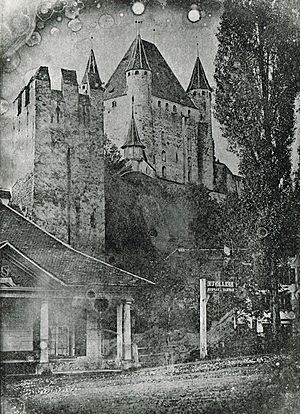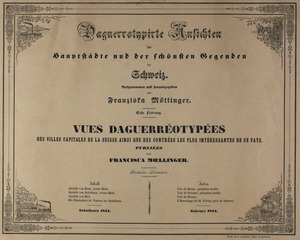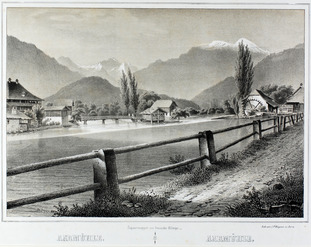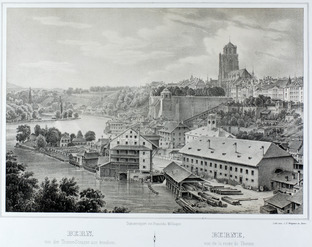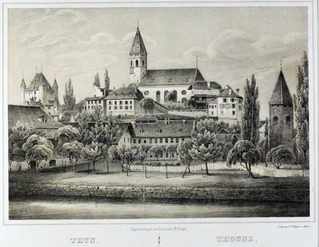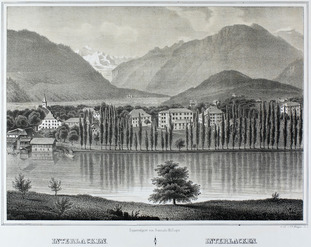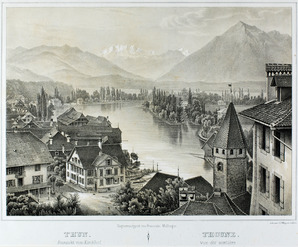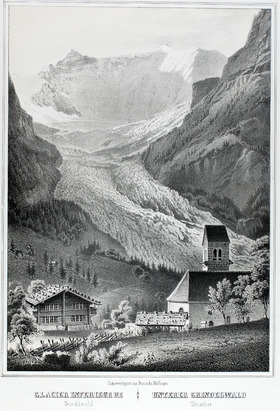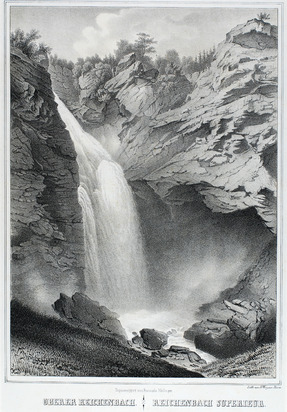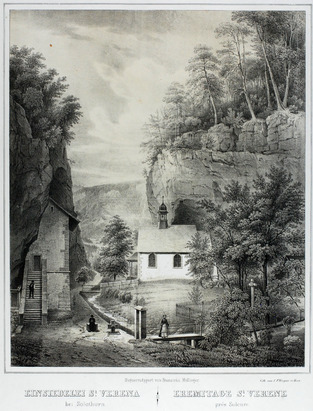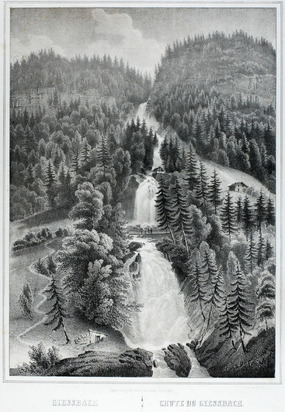Franziska Möllinger facts for kids
Louise Franziska Möllinger (1817–1880) was an amazing photographer from Switzerland, born in Germany. She was one of the first people to use a special early photography method called daguerreotype in the 1840s. Many people believe she was the very first woman photographer to work in Switzerland! Möllinger was also the first in Switzerland to use a printing method called lithography to make many copies of her landscape pictures, starting in 1844.
Contents
About Louise Franziska Möllinger
Louise Franziska Möllinger was born on March 14, 1817, in Speyer, Germany. She was the second child of David Möllinger, who was a watchmaker, and his wife Rosina. After her father passed away in 1834, her family moved to Switzerland.
Her Brother and Photography
Louise was very close to her older brother, Otto (1814–1886). Otto studied math and physics. From 1836, he taught math in Solothurn, Switzerland. In 1842, Louise started traveling around Switzerland. She took many daguerreotype photos of beautiful places and landscapes. The daguerreotype process was a new way to take photos that became available to buy in 1839. It was shown in Switzerland that same year.
It's not totally clear why Louise became so interested in daguerreotypes. But her brother Otto was the editor of a local newspaper in Solothurn. This newspaper reported on the work of Louis Daguerre, who invented the daguerreotype, in April 1839. Otto Möllinger later wrote more detailed reports about daguerreotypes in the newspaper. This might have sparked Louise's interest!
A Pioneer in Photography
Franziska Möllinger was the first woman to practice photography in Switzerland. She was also one of the first people to create daguerreotypes there. Being a woman photographer was very unusual back then, as photography was mostly done by men.
Daguerreotypes were special because you couldn't make copies of them. So, Louise found a clever way to share her pictures. She turned her daguerreotype images into lithographs. Lithographs are prints that can be copied many times. Some people think she traveled with a special wagon, like a mobile darkroom, to process her daguerreotypes. This would have been similar to another Swiss photographer, Johann Baptist Isenring.
In April 1843, an advertisement appeared in a newspaper. It announced that Franziska Möllinger was also available to take photos of people and families.
Her Published Works
In 1844, Möllinger released her first four lithographs. These were made from her daguerreotypes and developed in her studio in Solothurn. In the same year, she published the first book in German that featured lithographs based on daguerreotypes. The book had a long title: Daguerreotypirte Ansichten der Hauptstädte und der schönsten Gegenden der Schweiz - Vues daguerréotypées des villes capitales de la Suisse ainsi que des contrées les plus intéressantes de ce pays. This means "Daguerreotyped Views of the Capital Cities and the Most Beautiful Regions of Switzerland."
Later Life and Legacy
We don't know much more about Möllinger's life after her book. In 1868, she moved to Zürich with her brother. They opened a private school there. Later, they opened another school in Fluntern.
Franziska Möllinger became very ill for a long time. She passed away in Zürich on February 26, 1880. Her illness was possibly caused by chemicals used in her photography work.
Gallery of Möllinger's Lithographs
Here are some of the lithographs Möllinger published in 1844. They are based on her original daguerreotypes.
Town Scenes
Rural Scenes


